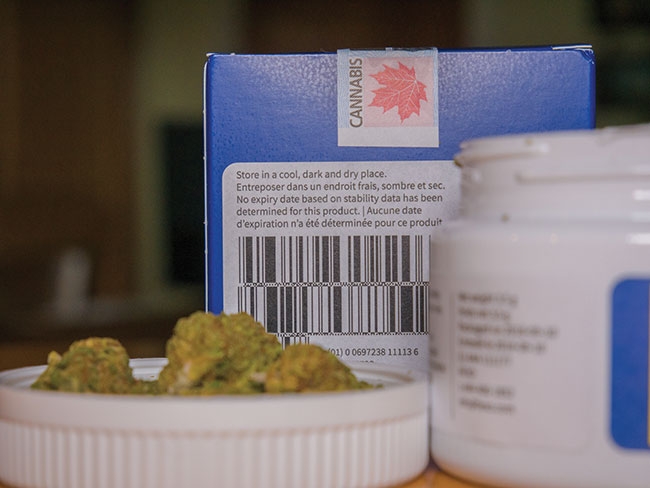
Opinion
Business
Legal
Management
Marketing
Production
Small things come in big packages
Not even a week had passed since the recreational use of cannabis was legalized on Oct. 17, 2018, when the rumblings first started. Customers were shocked at the amount of excess packaging and corresponding waste that accompanied their cannabis purchases.
March 13, 2019 By Matt Maurer
 The regulations impose a number of requirements that ensures keeping waste to a minimum is a difficult Not even a week had passed since the recreational use of cannabis was legalized
The regulations impose a number of requirements that ensures keeping waste to a minimum is a difficult Not even a week had passed since the recreational use of cannabis was legalizedPlastic containers, inside of cardboard boxes, wrapped in clear plastic, tucked away in a shopping bag – all for one gram of cannabis. One customer in Nova Scotia purportedly weighed the packaging from their purchase and discovered that it weighed forty times the amount of the product it housed.
In addition to the sheer number of layers of packaging that accompanied the product, consumers were also quick to point out that the size of the containers were far larger than was necessary to properly store the product.
Although concerns over the amount of waste that is being generated by cannabis packaging continue to be voiced, the issue is not going to be resolved any time soon unless significant changes are made to the regulations under the Cannabis Act.
The regulations impose a number of requirements that ensures keeping waste to a minimum is a difficult, if not impossible, task.
Compliance
The regulations require that the immediate container in which cannabis is packaged must, among other things, prevent contamination of the cannabis, have a security feature that provides reasonable assurance to consumers that it has not been opened prior to receipt, and meet the requirements of a child-resistant package under the Food and Drug Regulations.
While these requirements may not, in and of themselves, create excess waste, they do significantly limit the types of materials licence holders can use to package their products.
Issues with the size of the containers is directly tied to labeling requirements and the significant amount of information that is required to be displayed on the labels. The regulations require more than 10 different pieces of information to be displayed on the label of cannabis packages, in a manner that is “clearly and prominently displayed and readily discernible under the customary conditions of purchase and use.” Additionally, the regulations provide for minimum font sizes and mandatory use of bold font in some instances.
On top of this lengthy list of required information, producers are also required to display the standardized cannabis symbol as well as health warning messages, both of which are governed by minimum display sizes set out in the regulations.
Government response
Given all of these requirements, it is not hard to see how licensees’ hands are tied to some degree. While certain steps can be taken to help avoid unnecessary waste, the requirements to display certain information in certain minimum sizes virtually ensures that packaging can never be as small as it otherwise ought to be.
Fortunately, it appears that the government is listening and is now taking steps to alleviate some of these issues. Under the proposed regulations for the new classes of cannabis (i.e. edibles, concentrates and topicals), which were released just before Christmas 2018, certain information could be displayed on expanded panels or through alternative display formats, such as a peel-back or accordion style panels. These types of labels would allow for smaller packaging, which could serve to greatly reduce the amount of waste currently being generated.
Whether these types of changes will have a significant impact remains to be determined. However, it is encouraging to see that the government has heard the concerns raised by the industry and the general public, and is starting to take steps to address those concerns so quickly after legalization occurred.
Matt Maurer is vice-chair of the Cannabis Law Group at Torkin Manes LLP.
Print this page